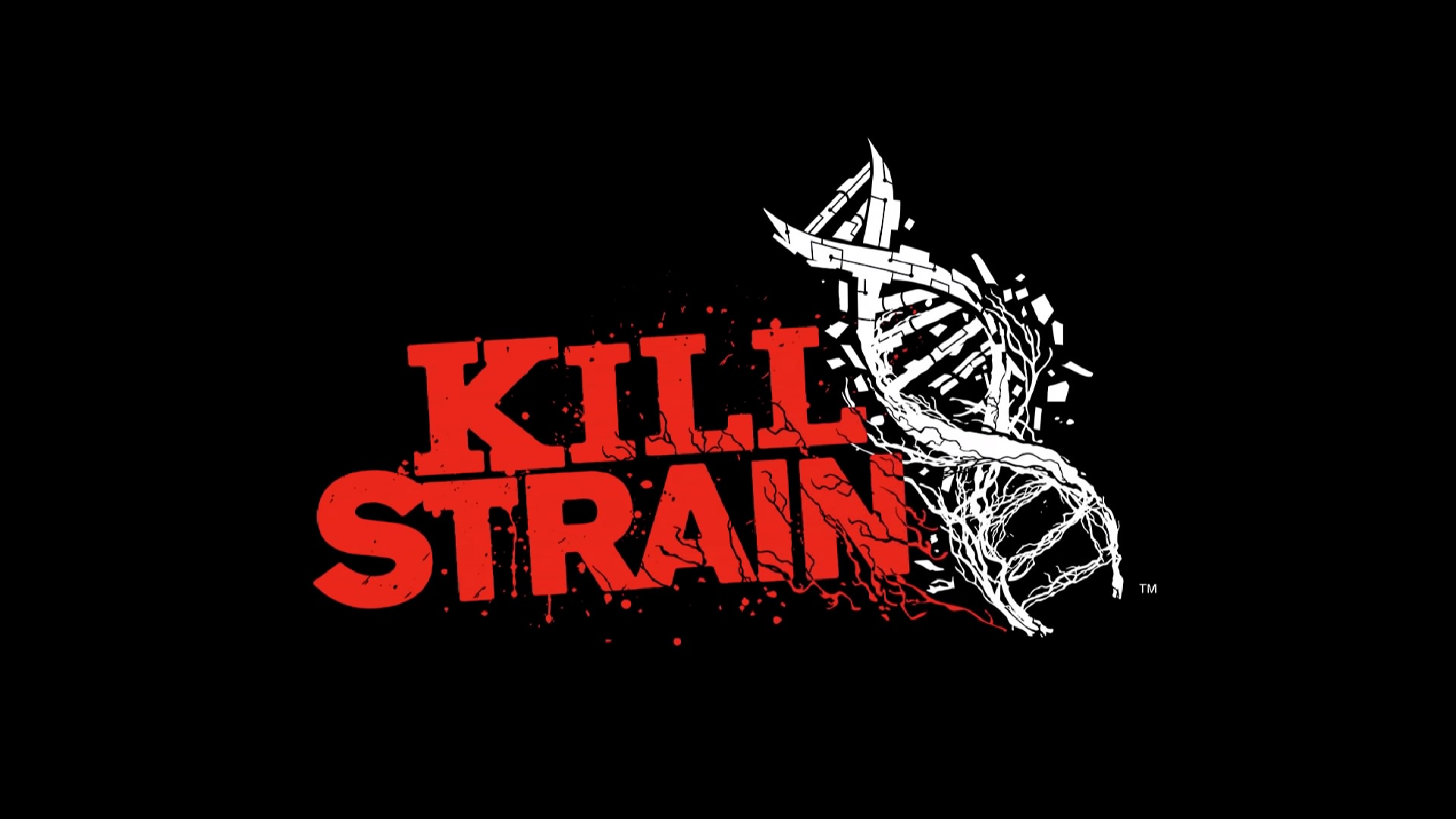
When will developers learn? Once a genre begins to pick up steam across the industry, every Tom, Dick and Harry is trying to duplicate the success of a select few. Thanks to the likes of League of Legends, Heroes of the Storm and DOTA 2, all of a sudden we are all buried up to our eyeballs in MOBA-inspired action releases. Even though the core mechanics are better suited for the mouse and keyboard clique over on the master race side of the fence, an occasional misguided studio or two ends up lost in console land and tries to make a go of it anyway. One such studio, the venerable Sony San Diego, decided to go the way of Smite and release their new title Kill Strain as an entirely free-to-play experience on console. Unfortunately, Sony also left the game free of fun, which is a cardinal sin in a genre that is so dependent upon replayability.
Painfully Predictable
The world is coming to an end, all thanks to the misguided actions of science. No, this isn’t every sci-fi novel written in the last century. It is the core mythos behind the world of Kill Strain. The results of this well-treaded scenario are two waring human-ish factions, made up of player controlled hero characters. In what can only be assumed was an attempt to try something different, a third wild card faction is also in the mix, consisting of what were once humans, now in the form of a weird infected creature. You don’t have to connect many dots to see the stark similarities between the infected and the Halo franchise’s Flood. Palette swap green with crimson and you have a pretty good idea of what the two human squads are up against.
At the beginning of every match players must choose their hero of choice from the lineup that they have paid (either real or in-game currency) to unlock, as well as an opposing infected hero character. Players are then randomly assigned to a team for the battle. I hope you didn’t have any ambitions of playing Kill Strain with friends, because any form of party grouping functionality is very notably absent. So to recap, players don’t get an opportunity to specify the infected and/or human factions they prefer, and there is no way to play this game with friends. Has the team over at Sony San Diego ever played an honest to goodness MOBA before? Not including basic party functionality for a game that HINGES around teamwork is akin to kayaking without an oar. Sure, it technically IS possible to do, but if you dive into the water without a paddle, you probably don’t really understand how basic mechanics of boating work. Plus, result will most likely be about as enjoyable as a round of this misguided mess.
Once a match has actually started, this is where the disorganized chaos reigns. Despite the fact that there is an ore mining location that must be captured by each human faction in order to proceed, only about half of players seem to understand this core tenet. This confusion mainly occurs because the tutorial does a piss-poor job explaining the actual mechanics of a match and how these tactics need to evolve throughout the course of a conflict. Hopefully this general confusion will begin to dissipate within a few weeks of launch, but the fairly ineffective intro to the world of Kill Strain does very little to help prepare players for when the fecal material hits the oscillating blades. Further compounding this issue is the nearly absent communication methods that a team can use to synchronize tactics. How are new players supposed to learn how to succeed if the tutorial is borderline useless and they can’t communicate with the veterans that understand how the game actually works? I wonder what could fix that? Party support, perhaps?
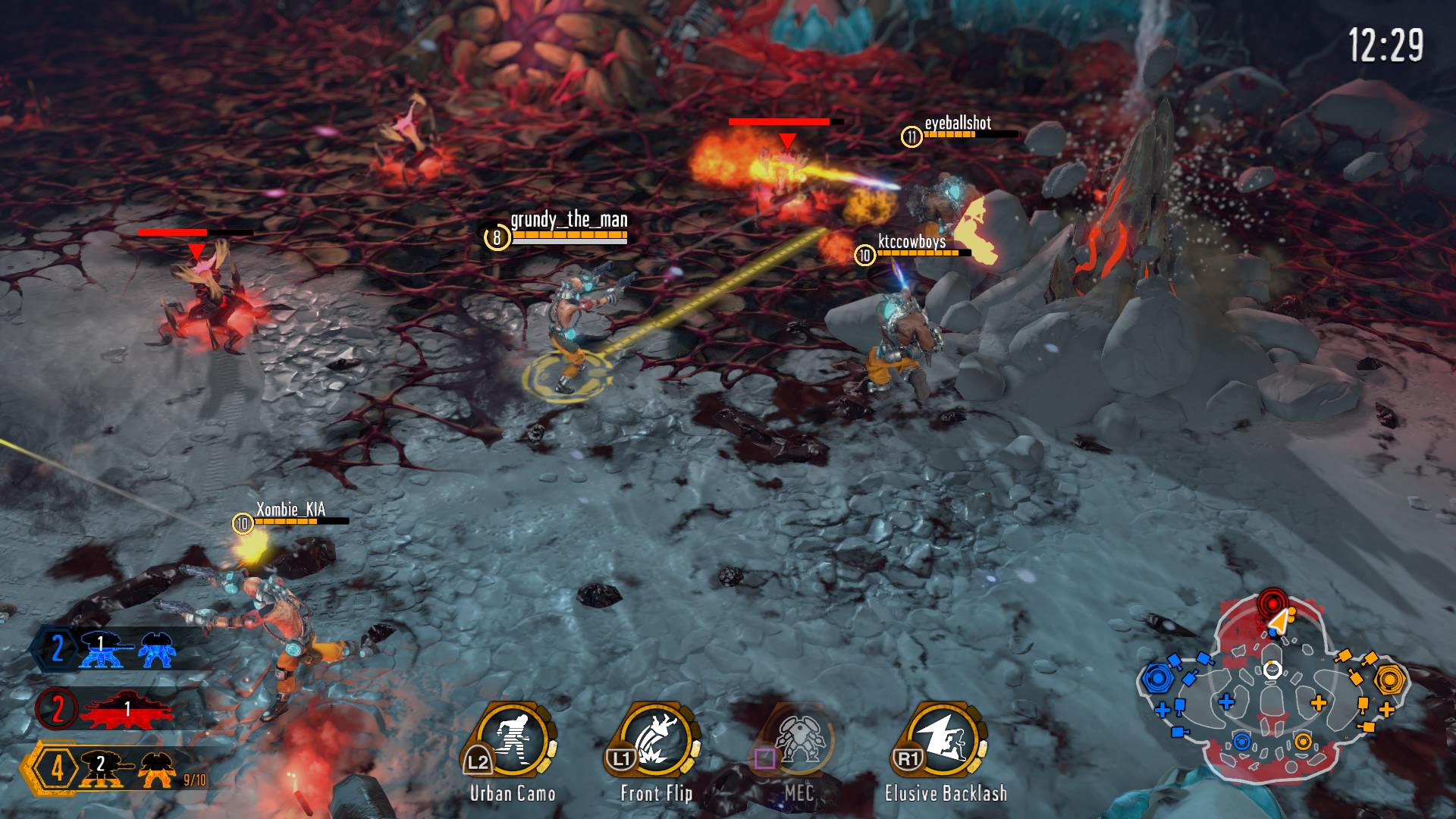
Evolving or Devolving?
As was alluded to earlier, throughout the span of a match, the field of battle is constantly evolving. While in many cases this fact is lost on newcomers, it actually proves to be one of the game’s few redeeming notes. Every player continues to level up over the course of each match, which primarily leads to increased weapon effectiveness. This is only notable because many MOBAs have permutations on a character’s abilities that unlock as a match progresses. Here, all of the abilities and skills are present at the outset and the only factor determining if the enhanced skills can be used is if there are enough resources available to do so.
Sadly, like pretty much everything else in Kill Strain, even the leveling system is a case of one step forward, two steps back. The mainly positive and console-centric progression mechanics seem fairly well thought out. The fact that new skills don’t pop in to over-complicate the late match brouhaha, is a fairly smart move. However, once again the cries of not understanding the core tenets of a genre, are hard to avoid. Despite the fact that each hero has a unique combat style and abilities, every damn character has the same final stage ability to call in the support of a mech. While controlling a mech, is of course, the most enjoyable part of the entire experience, the fact that every hero doesn’t have their own set of end-game powers once spits in the face of what makes the genre so much fun.
One thing that Sony San Diego correctly aped from its fellow competition is the core goal of destroying the opposition’s base. This is complicated a bit by the fact that there are now three factions. Ultimately the goal is still the same, only the battle now has two front lines. The push and pull that this three headed beast creates is an interesting tweak to the MOBA formula that at least initially works well. Once a match enters its late stages, however, things tend to tip heavily in the infection faction’s favor due to their ability to possess their competition. Yes, you read that right. The bio-engineered monstrosities can literally infect the opposition if they are bleeding out either in or near their possessed land. As soon as the dying character is drug across the threshold, they instantly join the infected side. So though the bloody beasts begin the battle with only two players, eventually the ranks grow. This only increases in pace and frequency the further each match goes along.
Finishing on a Whimper
If the battle manages to run the course of a full 20 minutes without a base falling, the infected are declared the de-facto winners. Why are they the only possible victors under this scenario, you ask? Hell if I know! Like far too many other aspects of this game, this critical decision goes unexplained. All I know is, it seems unfair that the human parties can only end a match by downing a base, while the infected can chose to wipe out the opposition’s base on their own, or just play the waiting game and get the lazy automatic win.
While I am busy pouring battery acid in the wounds of this poor, defenseless game, we should probably take a moment to discuss the how the game determines a match’s winner, when a base is destroyed. Predictably, the whole three faction system tends to over-complicate matters a bit. Both opposing sides cause damage against the third base’s core health bar. So this means that if one team spent the majority of a match whittling away the first 98 percent of a base’s shielding and the other opposing force only ticks away that critical last two percent, whomever the server determines delivered the final blow, walks away with the win. This frequently results in a unified last minute feeding frenzy over the smoldering corpse of a base, in a desperate attempt to be the team that lands the ever-important final blow.
This lack of clarity is one of the most inexcusably frustrating elements of Kill Strain. These shenanigans, which happen at the end of far too many matches, effectively undo everything that Sony San Diego was attempting to accomplish by including another invading faction. If this were a doctoral thesis, the lack of any sort of clear results post-match, would essentially disprove Sony San Diego’s theory that three party combat can be balanced and fair. How this managed to make it past the design stage is beyond me, because this oversight should have been pretty glaring from the outset.
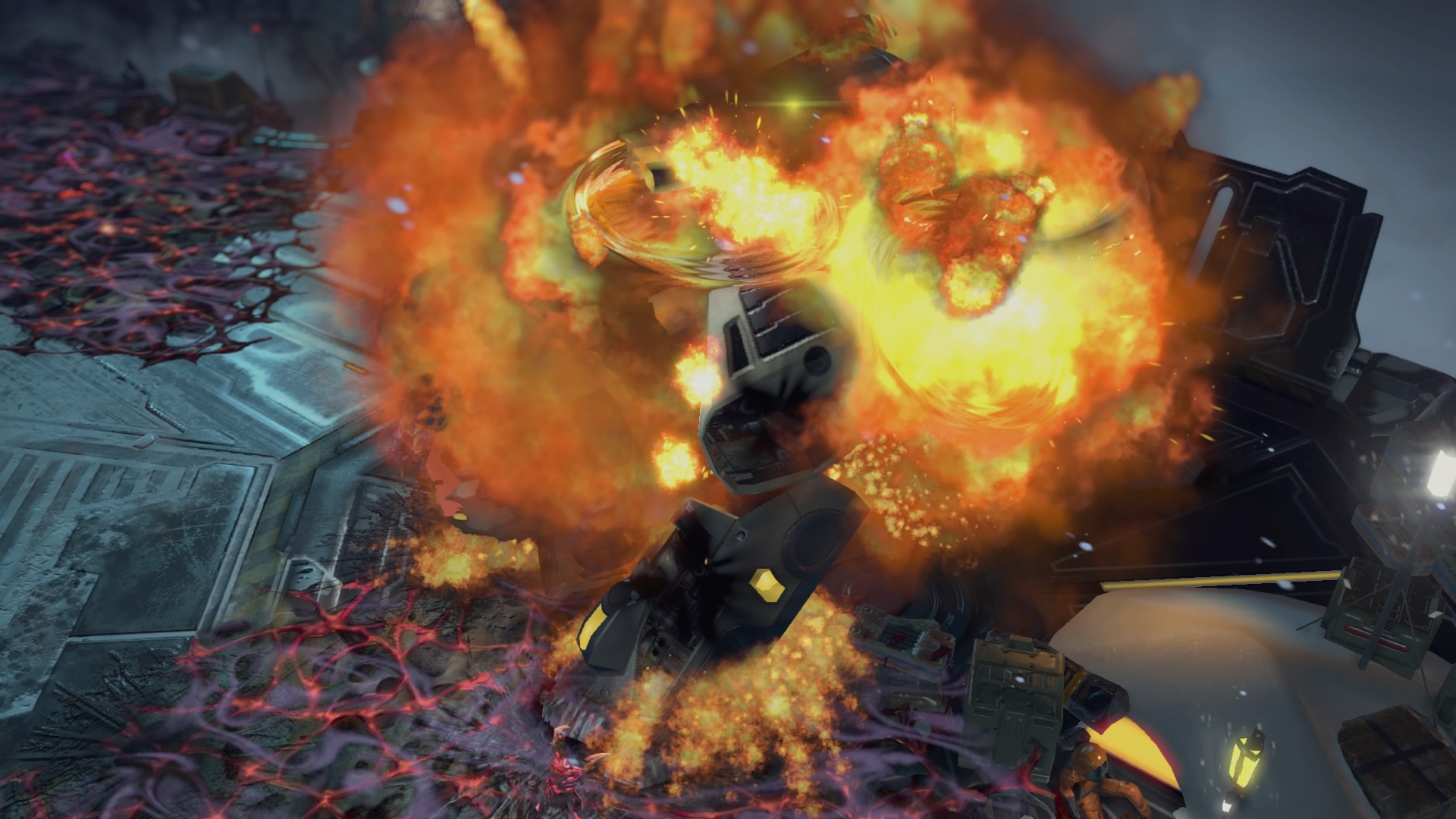
Feeling the Grind
On the bright side, this half-baked, glorified proof-of-concept won’t cost players a dime. After completing the tutorial, they are allowed to select one champion. This is a critical choice because players will essentially be chained to this hero until they have grinded for long enough to acquire the currency to afford a second champion. Just be ready to open up the wallet, if for some reason another character stands out. The grind to acquire in-game currency is long and tedious. Granted, it does come down to the question of investing time or money, but if a second champion was purchasable earlier on, it would make the process of replaying for coinage far more tolerable.
It would be hard to say that Kill Strain isn’t at least ambitious. The game was a studio’s first outing in a relatively immature genre, which attempted to take a dramatically different approach to many of core mechanics that define MOBAs. Though carefully calculated, these risks fall flat in execution, resulting in a confusing and joyless experience. Too bad that infected class couldn’t contaminate the other factions with a little fun. Now that would be a character class worth paying for…
Kill Strain is available to download for free on the PlayStation Network. Reviewed on PlayStation 4. For more information on scoring, please read our Review Policy here.
-
The three faction dynamic is an interesting twist on the standard formula
-
Infecting other humans and converting them completely alters the flow of battle
-
No party support or matchmaking
-
The tutorial does very little to explain how the game actually works
-
Why bother to have unique characters if they have the same final power up?
-
To generate enough currency to purchase new characters seems excessively grindy
Kill Strain Preview
-
Killstrain01
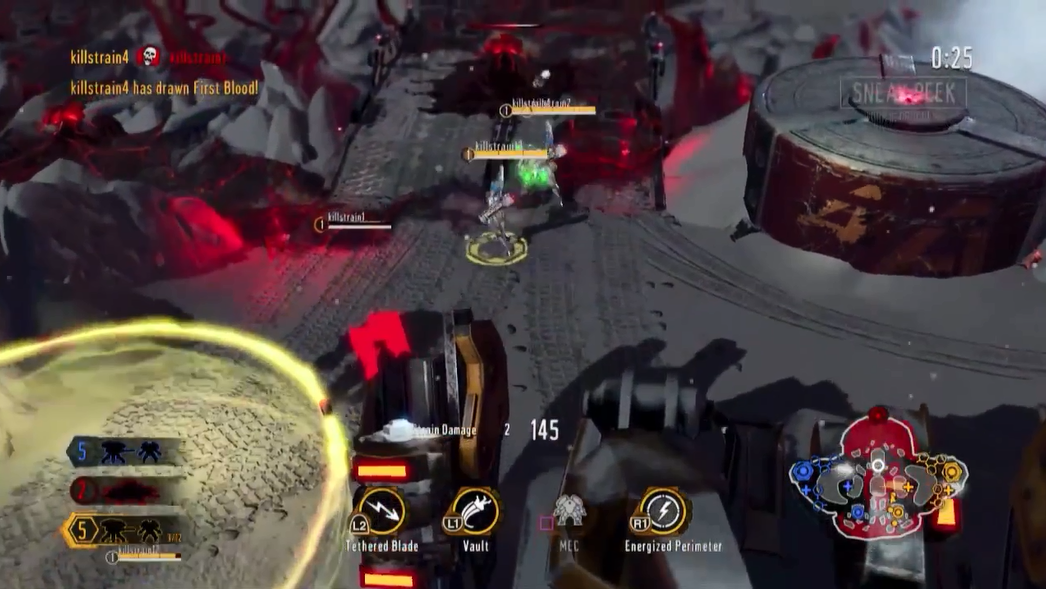
-
Killstrain02
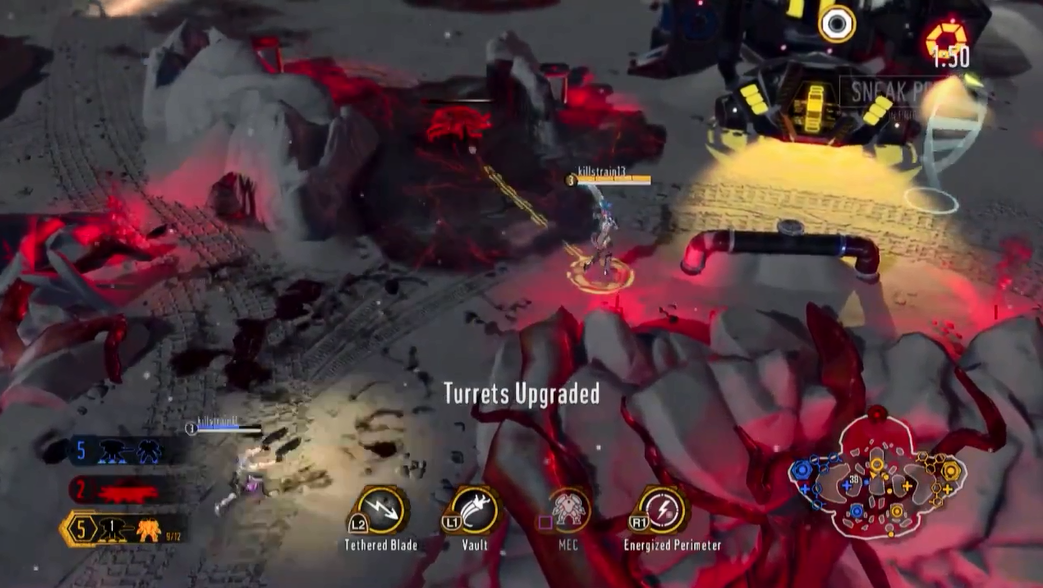
-
Killstrain03
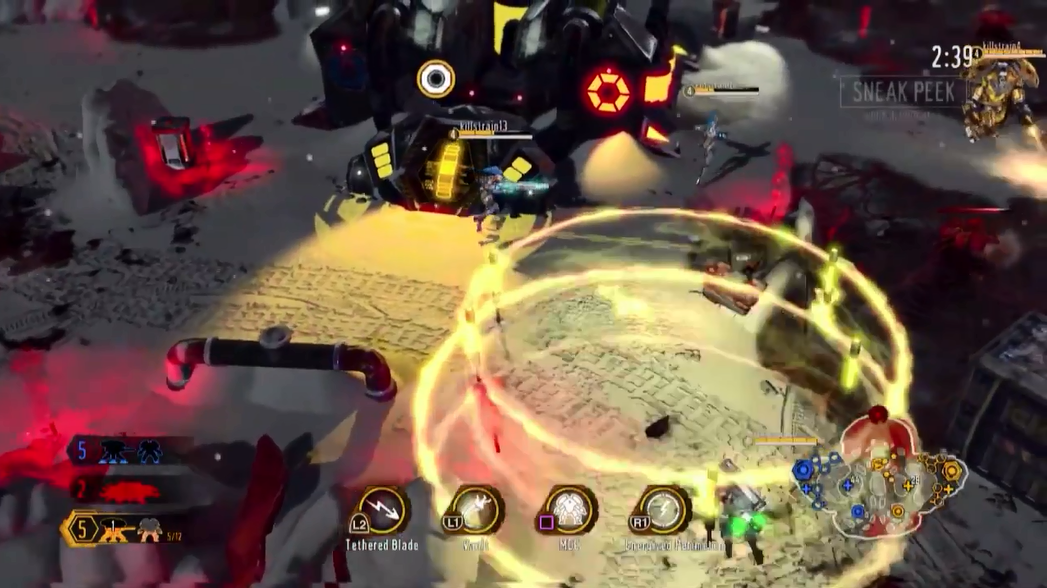
-
Killstrain04
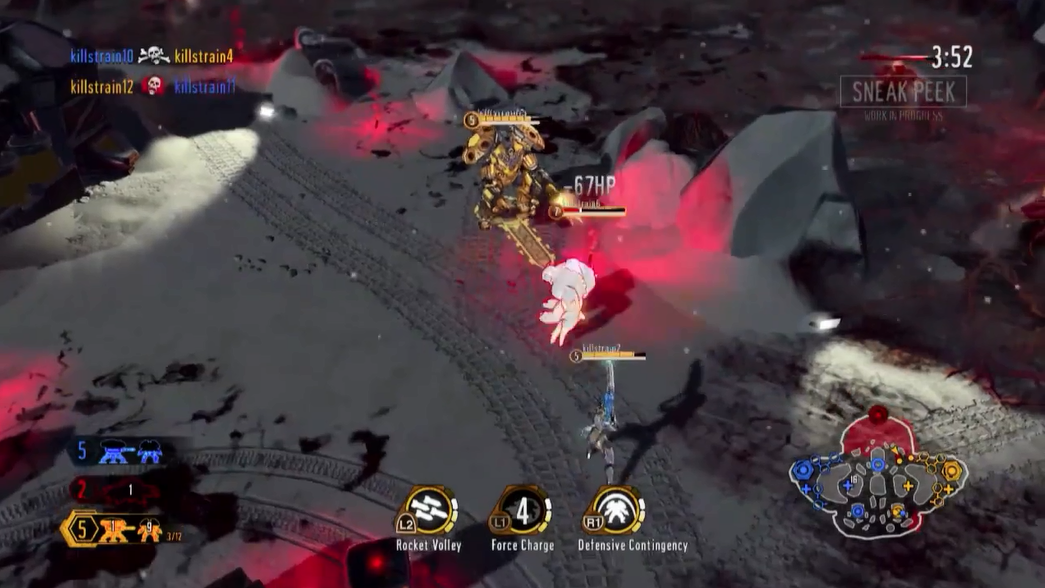
-
Killstrain05
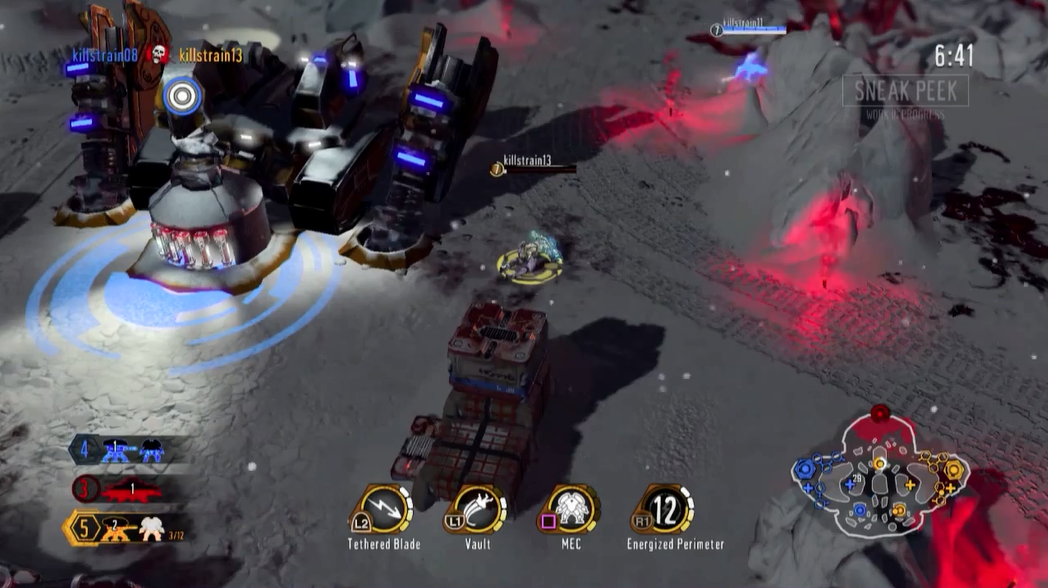
-
Killstrain06

-
Killstrain07
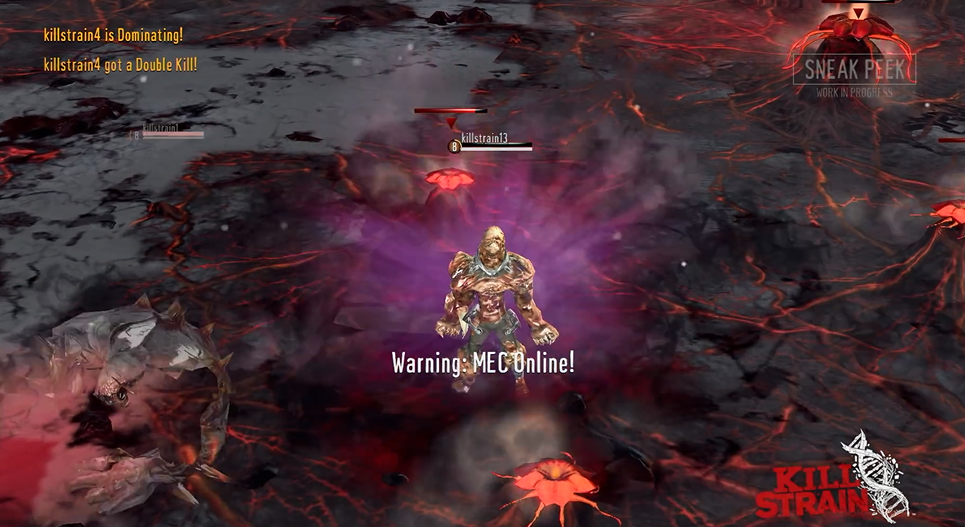
-
Killstrain08
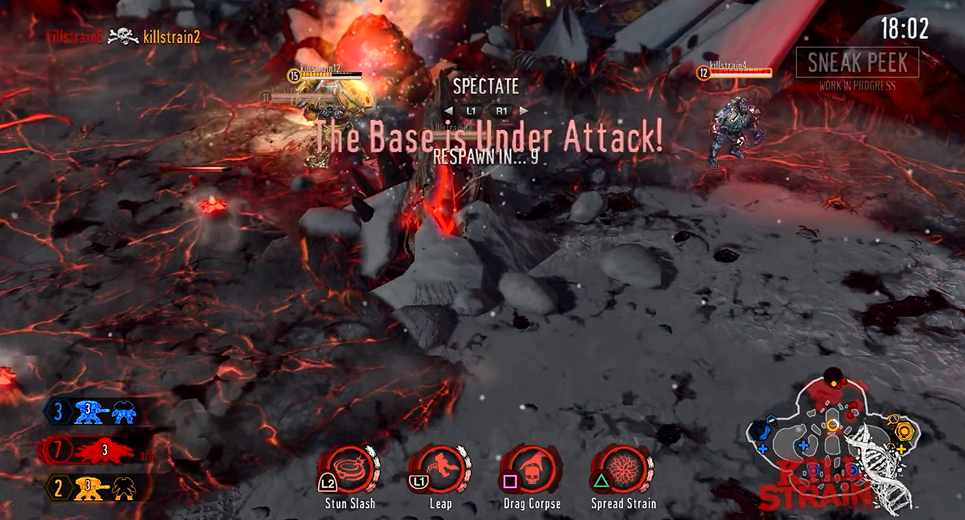
-
Killstrain09





